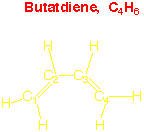Now, make these ratios: A / B = B / C = 1.61803398874989 . . . .
The Golden Section (sectio aurea), attributed to Leonardo Da Vinci
how Leo used it everywhere in his art,
in lovely Mona Lisa,
in his Vitrivian man
Phi , attributed to Mark Barr, American mathematician
Now, make these ratios: A / B = B / C = 1.61803398874989 . . . .
Phun Phrolics with Phi
- the Fibonacci Series
0 1 1 2 3 5 8 13 21 34 55 89 144 . . . .
1 0+1 = 1
1 1+1 = 2
2 2+1 = 3
3 3+2 = 5
5 5+3 = 8 and 5/3 = 1.66666
8 8+5= 13 and 8/5 = 1.60
13 13 + 8 = 21and 13/8 = 1.625
21 21+13 = 34
. . . . . and 144/89 = 1.61797
. . . . . and 1012, 334, 155 / 63, 245, 986 = 1.61803988749895
. . . .and all the rest, ratios = PHI
Sharon has some beautiful (if geeky) phi moments:
from the math tricks, I mused inwardly "there's something about 5 and square roots that reappears ..."
on another site I find I am right!
( 5 1⁄2 + 1 ) / 2 = 1.6180339... = Phi
from the Golden Section diagram of lines:
A/B = B / C = 1.61803398874989 . . . .
also C/B = 0.61803398874989 . . . .
ye gads! The molecular orbital coefficients of butadiene!!!

molecular orbital #1 = 0.618 x C1 + 1.618 x C2 + 1.618 x C3 + 0.618 x C4
molecular orbital #2 = 1.618 x C1 + 0.618 x C2 - 0.618 x C3 - 1.618 x C4
Then I found the special relationship that Phi +1 = (Phi)2
which can be re-written as x2 - x -1 = 0, of which the roots are Phi = 1.618.. and 0.618...
well, that explains the chemistry results ( for me...)
meanwhile . . . I rearrange x2 - x -1 = 0
as (x - Phi) (x + p) = 0
and then as (x - A/B) (x + B/A) = 0
now doesn't that look symmetrical, in a way??
More cool phi-geeky relationships to chemistry: DNA (this on'es for Alanna)
On to human beauty: do YOU measure up?
Phi relationships in the body:
the "mask" ? the man behind the mask? you and your mask